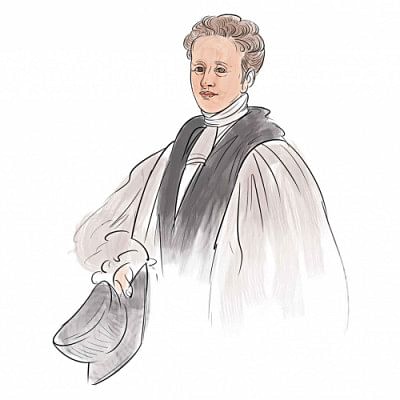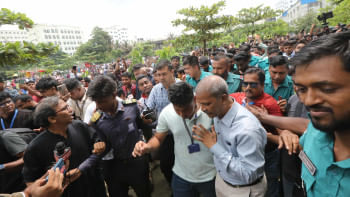Age-old travelogues: Rare glimpses of Bengal’s forgotten past

But with the experiences they have penned down, we can travel back in time! And hence, we present five such travellers and some highlights of their tours.
Meeting Hazrat Shah Jalal (R)
Bangladesh is a land of many saints, and one name that heavily inspires and influences us is Shah Jalal (R) of Sylhet. Innumerable people continue to pay their respect to this great man and visit his mausoleum.
Centuries ago, the celebrated Moroccan globetrotter Ibn Battuta had the opportunity of actually interacting with him in person (although he used a different name, it is widely accepted that he was indeed referring to Shah Jalal of Sylhet).
Ibn Battuta came to Bengal in about 1346. He visited Chattogram, "which is large and situated in the seashore." He also went to Sonargaon, from where he boarded on a vessel to Java.
In his travels, he was very eager to meet the highly revered Shah Jalal, which he did.
"When I presented myself to him, he arose and embraced me. He then asked me of my country and travels," he wrote, adding that the saint told his disciples to treat him honourably as a guest.
The traveller also left us some curious notes on the saint's habits and lifestyle: "... he fasted through a space of about 40 years, never breaking his fast till he had fasted throughout 10 successive days. He had a cow, on the milk of which he usually breakfasted; and his practice was to sit up all night."
The whole episode is of intrigue and legends.
To illustrate, a miracle — which took considerable time to unfold — was about Shah Jalal gifting a garment which he was wearing, to Ibn Battuta.
He had foreseen that the traveller would lose the garment one day to a king. Consequently, the globetrotter promised, "As he has clothed me in his own clothes, I will never enter with them into the presence of any king..."
But, in China, it so happened that a king by a twist of fate somehow saw the garment and wanted it, and ordered to have it taken off him, hence making the saint's foresight come true.
This story actually continues and complicates further. In short, Ibn Battuta came across the clothing again a year later, on yet another person, apparently for whom the saint eventually intended it for!
A splendid kingdom
Ma Huan, a Chinese traveller, visited Sultan Ghiyasuddin Azam Shah's court as an interpreter to a Chinese Ambassador, in the early 15th century. The traveller had seen Chattogram and Sonargaon, and had described the kingdom of 'Pang-ko-la' (Bengal):
"It is a kingdom with walled cities... It is an extensive country and its products are abundant... The rich build ships in which they carry on commerce with foreign countries. Many are engaged in trade and a good number in agricultural pursuits... The language of the people is Bengali. Persian is also spoken here... Not having tea, they offer their guests betel-nuts in its place. The streets are well-provided with shops of various kinds, drinking and eating houses, and bathing establishments."
One thing that ought to be said here is that many travellers, including Ma Huan, did not forget to mention the globally renowned muslins, speaking highly of it.
The Sonargaon splendour
Continuing with our journey through time — and that of the glory and excellence of our heritage weaves — we travel to the next century, when the English merchant and traveller Ralph Fitch visited Sonargaon, in about 1586.
He had identified 'Sinnergan' (Sonargaon) as the place "where there is the best and finest cloth made of cotton that is in all India."
His accounts also remind us of the iconic chieftain, commonly known today as the leader of the so-called 'Baro Bhuiyan,' Isa Khan: "The chief king of all these countries is called 'Isacan,' and he is the chief of all the other kings..."

Meeting Nawab Shaista Khan
There were many subahdars who ruled Bengal during the Mughal era, some more known to us than others. And among those whom we know much about, a couple of names have risen to the height of legend; the subject of much fascination.
One such ruler is Nawab Shaista Khan.
Hence, with much expectation, we turn to Jean Baptiste Tavernier, a French jeweller, who left us an account of his 1666 encounter with the historic leader in Dhaka, a provincial Mughal capital back then.
Keep in mind that we are talking about a time when Lalbagh Fort, which is often associated with the Nawab, did not come into existence yet (construction work begun more than decade later).
He visited Shaista Khan's wooden house, which some historians hint to be a site in the riverbank, where there once stood a 'palace' of the Nawab, of which nothing exists today.
On the other hand, Tavernier lodged with the Dutch during his stay in Dhaka.
Anyway, he presented the Nawab with a number of precious items, such as an emerald jewel and a fine scarf with gold and silver embroideries; and his son "a watch having a case of enamelled gold, a pair of pistols inlaid with silver, and a telescope."
From his writings, it is evident that he sold some items to the Nawab.
It seems that Tavernier visited Shaista Khan a number of times when in Dhaka, and that the Frenchman may have had a favourable impression on him, as on the last day, the Nawab was gracious enough to give him a special passport, which granted him the privilege of being "able to go and come throughout all the territories of Great Mughal (empire) as one of his household."
Dhaka in ruins
One may say that the glorious sun had sunk with the coming of the colonial era. The eyewitness account of Bishop Reginald Heber, when he was in Dhaka in 1824, reflects that, as he painted a melancholic picture of the city — "merely the wreck of its ancient grandeur," where various buildings had "all sunk into ruin, and overgrown with jungle."
It was a time when the Naib Nazims of Dhaka were puppets in the hands of colonial rulers.
Shams-ud-Daulah was the Naib Nazim during Heber's visit. He was, Heber noted, "... shorn of all political power, and is not even allowed the state palanquin."
The guards and his court were largely ceremonial in nature.
Of the man himself, Heber had left us vivid description: "He is a good-looking elderly man... He sat for a good while smoking his hookah, and conversing fluently enough in English, quoting some English books of history... He cautioned me against going amongst the ruins, except on an elephant, since tigers sometimes, and snakes always, abounded there... He was dressed in plain white muslin, with a small gold tassel attached to his turban."
Heber's episode was during a time of oppression and misery, a land bearing the heavy burden of colonisation.
Of course, now looking back, things have turned around. Bengal has come a long way from there. Gone are the colonial rulers, and gone too, are the latter oppressors of (West) Pakistan who committed heinous atrocities, fighting against which, we brought about the birth of an independent Bangladesh — which we are now celebrating the golden jubilee of!
As the poet Rudyard Kipling once wrote:
"Cities and Thrones and Powers
Stand in Time's eye,
Almost as long as flowers,
Which daily die:
But, as new buds put forth
To glad new men,
Out of the spent and unconsidered Earth,
The Cities rise again."
Creatives: Biplob Chakroborty

 For all latest news, follow The Daily Star's Google News channel.
For all latest news, follow The Daily Star's Google News channel. 



Comments